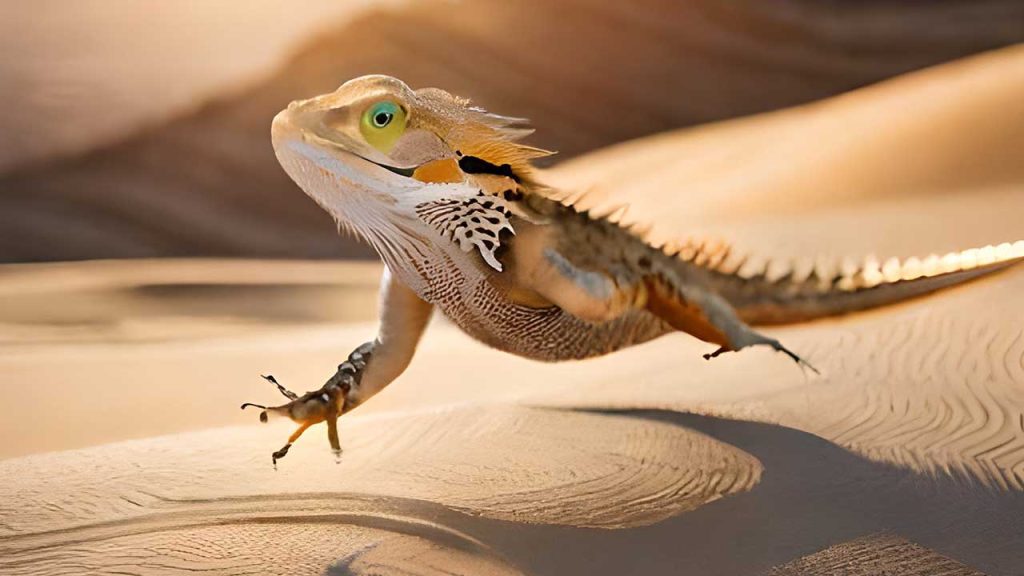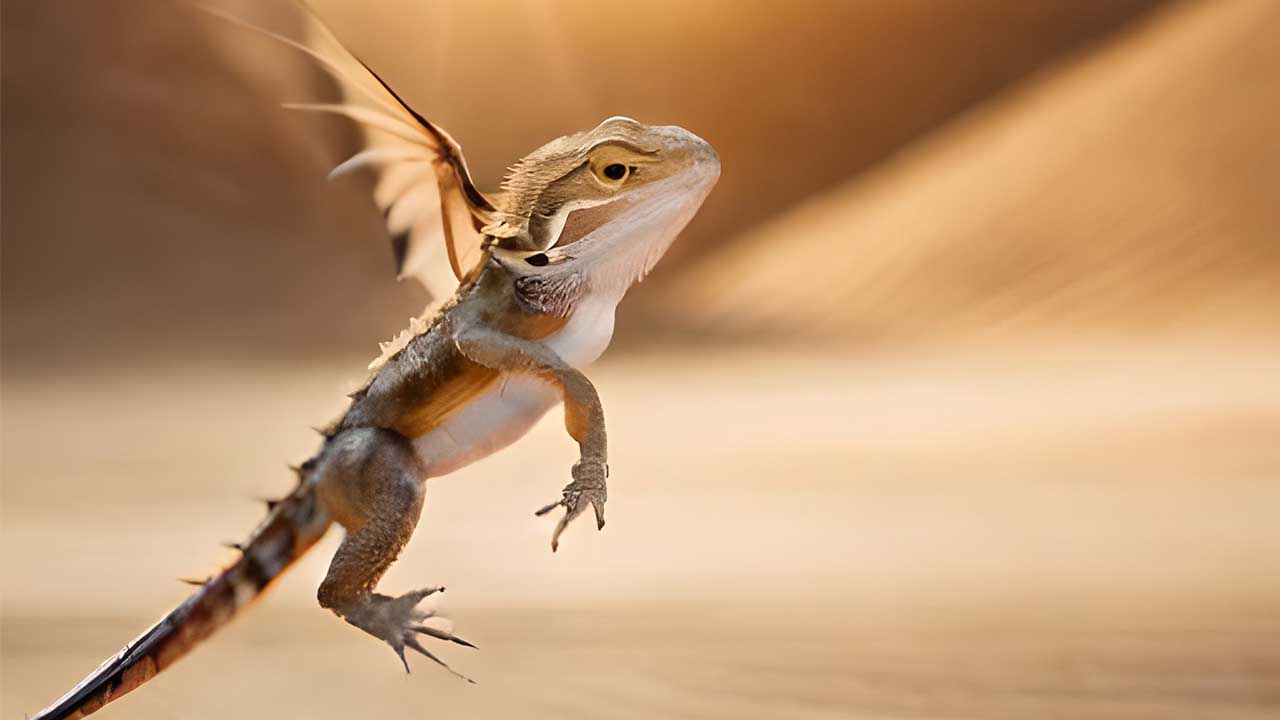If you’re a proud owner of a bearded dragon, you’ve probably experienced the curious behavior of them jumping out of your hand. This behavior can be both fascinating and perplexing. In this article, we’ll delve into the reasons behind why your bearded dragon might be exhibiting this behavior and provide insights into their world of jumps and leaps.
Bearded dragons are captivating reptilian companions known for their unique behaviors. Among these behaviors, the tendency to jump out of your hand might leave you wondering about their motivations. To truly understand why this happens, we must delve into the various factors that contribute to this interesting phenomenon.
Contents
- 1 Understanding the Instincts
- 2 Communication Through Movement
- 3 Energetic Disposition
- 4 Curiosity and Exploration
- 5 Building Trust and Bonding
- 6 Avoiding Overstimulation
- 7 Responding to Temperature Changes
- 8 Feeding Time Excitement
- 9 Providing Enrichment
- 10 The Joy of Exploration
- 11 Common Misconceptions
- 12 How to Minimize Jumping Behavior
- 13 Conclusion
Understanding the Instincts
Natural Response to Threats
In the wild, bearded dragons encounter numerous predators. Their jumping behavior can be traced back to their survival instincts – when they feel threatened, leaping away from a potential threat is a swift way to ensure their safety.
Observing the Surroundings
Bearded dragons are highly visual creatures. Their keen perception of their surroundings might lead them to jump when they spot something that piques their interest or triggers a slight discomfort.
Communication Through Movement
Expressing Discomfort
Jumping can also be a way for bearded dragons to communicate their discomfort. If they’re not in the mood for handling or if something in their environment is unsettling, a leap might be their way of saying “I need some space.”
Claiming Territories
In the wild, territory is crucial for survival. Even in captivity, bearded dragons have an inherent need to establish their territory. Jumping can be a way to mark their presence and establish dominance.
Energetic Disposition
Youthful Exuberance
Young bearded dragons are known for their boundless energy. Their jumps might be a manifestation of their exuberant and playful nature.
Physical Activity Needs
Bearded dragons are active reptiles. Jumping could be a way for them to engage in physical activity, especially if they’re not getting enough exercise in their enclosure.
Curiosity and Exploration
Investigating New Environments
Bearded dragons are naturally curious creatures. Jumping out of your hand might be their attempt to explore new surroundings or objects.
Satisfying Their Inquisitiveness
Jumping can also be a sign of their innate curiosity. By leaping around, they could be trying to satisfy their insatiable desire to discover the unknown.
Building Trust and Bonding
Gradual Acclimation
Building trust takes time. Young bearded dragons might jump out of your hand as they’re still getting used to being handled.
Establishing a Connection
On the other hand, adult bearded dragons might jump to show their comfort and trust, using it as a way to bond with their owner.
Avoiding Overstimulation
Sensory Overload
Bearded dragons have highly developed senses. If they’re exposed to too much sensory input, they might jump as a reaction to feeling overwhelmed.
Respecting Personal Space
Just like humans, bearded dragons have personal space boundaries. If they’re not in the mood for interaction, a jump can be their way of setting those boundaries.
Responding to Temperature Changes
Seeking Optimal Temperature
Bearded dragons are cold-blooded reptiles, reliant on external sources of heat for thermoregulation. Jumping might be their way of seeking out the optimal temperature for their comfort.
Thermoregulation Instincts
In the wild, bearded dragons move between shade and sunlight to regulate their body temperature. Jumping can be a part of this natural thermoregulation behavior.
Feeding Time Excitement
Associating Hands with Food
Bearded dragons are intelligent enough to associate hands with feeding. Their jumps might be fueled by the excitement of anticipating a meal.
Anticipating Mealtime
Jumping could also be a way for them to signal their eagerness for feeding time, especially if they’ve learned that jumping gets your attention.
Providing Enrichment
Creating a Stimulating Environment
Jumping can be a sign of boredom. Ensuring their enclosure is enriched with various stimuli might reduce the frequency of this behavior.
Mental Stimulation Needs
Bearded dragons need mental stimulation to thrive. Jumping might be their way of seeking new experiences and mental challenges.

The Joy of Exploration
Embracing Their Nature
Jumping is an inherent behavior that allows bearded dragons to embrace their true nature as agile and exploratory creatures.
Encouraging Active Engagement
As owners, we can encourage jumping in a controlled environment, providing opportunities for them to engage in this behavior safely.
Common Misconceptions
Misinterpreting Fear
While jumping can indicate fear, it’s essential not to jump to conclusions. Consider the context and other behavioral cues.
Miscommunication Signals
Bearded dragons might have different reasons for jumping. It’s important to recognize that it’s a form of communication, not always driven by fear.
How to Minimize Jumping Behavior
Gentle Handling Techniques
Using gentle and slow handling techniques can help your bearded dragon feel more at ease in your hand.
Using Enclosed Spaces
Using an enclosed space or providing a cozy spot in your hand can reduce the likelihood of them jumping.
Why Is My Bearded Dragon Biting His Ornaments?
Conclusion
In conclusion, the behavior of a bearded dragon jumping out of your hand is a fascinating interplay of their instincts, curiosity, communication, and environment. By understanding the various reasons behind this behavior, you can foster a stronger bond with your scaly companion while ensuring their well-being and happiness
FAQ
Yes, it’s a common behavior driven by various factors, including their instincts and curiosity.
Using gentle handling techniques and providing stimulating environments can help minimize jumping behavior.
No, jumping is more often a way to communicate discomfort, curiosity, or a desire for exploration
As they mature and become more accustomed to handling, jumping behavior often decreases.
Frequent jumping can be a sign of stress or a need for mental and physical stimulation. Providing enrichment can help alleviate this behavior.


